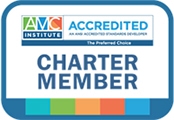In the board or committee minutes of most volunteer organizations, there is reference to a discussion that usually has some variation of the following:
"The board then discussed X program. The directors noted that the program has been losing traction over time and brainstormed why this may be the case. One director suggested cutting the program which met with general support. After continued discussion, the board tabled the issue."

Why is it that organizations are often hesitant to cut programs that are either not effective from the get-go or have lost their relevancy over time? Especially when there is often a general consensus about the program’s lack of traction? In the corporate world, it is critical that providers of goods and services constantly fine-tune their product lines, adding new items and eliminating those that are at the end of their lifecycle. There are two interconnected reasons for this: capacity and profit.
A company has only so much capacity to properly market and support its offerings in order to maximize its profit in each area and in total. The same principles apply to associations — no matter how large your organization, there is limited capacity to meaningfully support programs and initiatives and each new, or redundant, program has inherent opportunity costs (and real costs) related to the other ways you pursue your mission. The repeated discussion of ineffective programs without action takes precious time and can freeze the whole organization’s ability to move forward.

If you find yourself with one of these situations in your own organization, you first need to determine why you can’t seem to let go of the program, and then take determined steps to unlock the cycle of tabling the issue. The three main reasons I hear for keeping ineffective programs, along with steps for positively moving forward, are below.
- The board or committee feels that the program is ineffective, but cannot articulate why. Often in meetings this is expressed as “it just doesn’t seem to be working” or “it's not hurting anything." In this case, try this simple exercise: Ask each board or committee member to write down one deliverable that finishes the sentence, “I will feel this program is successful if...” Then as a group, narrow the list to three or four key metrics upon which you will judge the program moving forward. Make sure the metrics are clearly articulated to the team in charge of execution and then set a firm timeframe for evaluation. If the program doesn’t achieve the goals in the time allotted, eliminate it.
- The program is led or championed by a grandfather of the organization. All organizations have at least one current or past volunteer leader — a “grandfather" — whose dedication, commitment, and vision have defined and shaped the organization to such a degree that his or her pet projects are tolerated or encouraged despite their lack of current results. In this case, a one-on-one discussion with the person is in order. Often you’ll find that his or her passion can be redirected into a complementary initiative that could benefit from the person’s historical perspective and ability to mentor. With some diplomacy, the grandfather’s passion can be reallocated to a more productive, and fulfilling role.
- Deference to the committee. Sometimes a non-discussion vote will yield universal board agreement that a program should be cut, yet the board defers the decision back to the committee in charge of the program. The committee, in turn, is unlikely to cut its own programmatic initiatives so makes minor adjustments to tactics in order to refine. These tweaks generally don’t enhance the program, but instead cost the organization more precious resources: time, money, and volunteer morale. The board of directors is the body responsible for the vision of the entire organization and, therefore, is the proper authority to weigh the relative value of programs against one another. If you have a solid strategic plan (and I hope you do!), it is perfectly appropriate to overrule a committee and dictate a program be cut. If you redirect the volunteer committee members’ efforts to devising a new program that supports the same part of the strategic plan as the old program, you’ve then empowered them rather than deflating them and, in fact, added strength to the pursuit of your ultimate goals.
If an ineffective program is plaguing your organization, first consider why you are hanging on to it, then pick your strategy and affirmatively, and once-and-for-all, LET IT GO!




